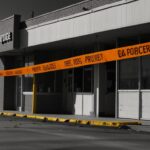A massive protest in Tel Aviv demands a ceasefire in Gaza and the release of hostages, as tensions with Hezbollah escalate. Israeli forces clash with Iran-backed Hezbollah, raising fears of a broader conflict with threats to critical infrastructure. The UN warns of a potential catastrophe as casualties mount on all sides amid ongoing violence.
Tens of thousands of Israelis gathered in Tel Aviv to demand a ceasefire in Gaza and the return of hostages held by Hamas. This protest, labeled the largest anti-government demonstration since the Gaza conflict began, saw scuffles and arrests as police intervened to clear protesters from the city’s main highway.
These weekly rallies, which now also call for new elections, included relatives of hostages among the participants. Approximately 120 hostages were taken during the October 7th attack by Hamas and its allies, in which around 1,200 people were killed. Since then, Gaza health authorities report over 37,400 fatalities due to Israel’s offensive.
In a related development, clashes between Israeli forces and Iran-backed Hezbollah escalated over the weekend. Hezbollah launched a drone attack on northern Israel, while Israeli air strikes targeted villages in southern Lebanon, though no casualties were reported.
Israeli Foreign Minister Israel Katz has indicated the possibility of a broader conflict with Hezbollah and Lebanon, with civilian infrastructure at risk. Hezbollah’s leader, Hassan Nasrallah, has also issued threats, emphasizing their capability to strike critical infrastructure in Israel.
The violence, ongoing since October 8, has resulted in the deaths of about 350 Hezbollah fighters, over 90 Lebanese civilians, 15 Israeli soldiers, and 10 Israeli civilians. The UN Secretary-General Antonio Guterres warned that any miscalculation could lead to a region-wide catastrophe.
This situation recalls the 2006 conflict between Israel and Lebanon, which saw significant casualties on both sides.





